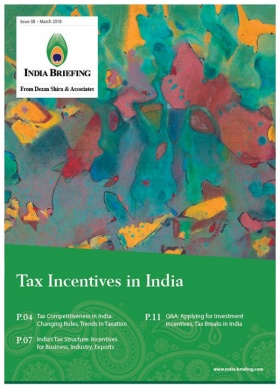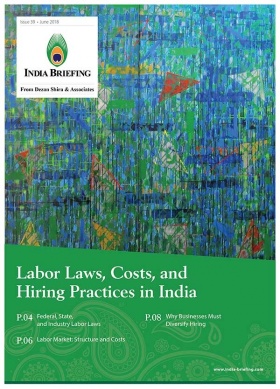China Reduces Drug Tariffs, Indian Manufacturers Remain Skeptical over Market Access
On May 4, China announced that it had exempted import tariffs for 28 drugs, including all cancer drugs from May 1. Further, Chinese authorities will also accept data collected from clinical trials conducted outside the mainland – these can be used for applications to register innovations in drugs and medical equipment.
The new norms could assuage Indian concerns overs its highly imbalanced trade relationship with China. With the new tariff exemptions in place, Indian pharmaceutical companies and medicine exports could enjoy greater market access in China, and potentially reduce the ballooning bilateral trade deficit.
Initial optimism over the impact of the tariff cuts has since faded.
While local media coverage continues to pursue the benefits of the opening, Indian pharmaceutical majors maintain that it’s ‘much ado about nothing’.
The reason is simple.
Any industry doing business in China, as Indian drug makers can attest to, must navigate the country’s labyrinthine regulatory system, particularly if there is local resistance.
In case of the pharmaceutical sector, Indian firms are subjected to lengthy inspection processes, requiring multiple official clearances for both oral and injectable drugs. Altogether, this takes up between three to five years.
Indian pharmaceutical exporters, commerce ministry lobby Beijing
Despite the bleak prospects, Indian exporters and government officials are actively lobbying Chinese authorities.
In June, Indian pharmaceutical exporters met with representatives from China’s Food and Drugs Administration (CFDA) to discuss persistent challenges faced by them when entering the Chinese market.
This will be followed by another interaction between Indian pharmaceutical delegates and Chinese authorities in Shanghai, in August, to discuss expediting the ease of regulations.
Meanwhile, India’s commerce ministry is keenly following up on the matter with Beijing.
At a joint economic group meeting chaired by the trade ministers of both countries, India highlighted the potential for increased pharmaceutical imports by China, alongside rice and IT.
In the past, Indian generic drugs exporters have found it near impossible to do business with China as the clearance process takes up to five years. Drug makers also face problems when they attempt to commercialize a new drug.
Thus far, the CFDA appears willing to speed up regulatory clearances, and is presently considering the option of faster regulatory approvals to EU-approved Indian pharmacy suppliers. However, businesses remain skeptical, preferring to wait for greater details on just how this regulatory easing will be implemented.
India’s pharmaceutical exports to China
Currently, China accepts only a few Indian drug exports that have been approved by the US Food and Drug Administration.
In 2017-18, India exported pharmaceuticals worth US$27 million – less than two percent of India’s total drug exports, worth US$17 billion – due to non-tariff barriers.
India, on the other hand, imports raw materials worth US$6 to US$7 billion from China for making active pharmaceutical ingredients (APIs) for its pharmaceutical industry, according to data available with the Pharmaceutical Export Promotion Council (Pharmexcil). In fact, about 90 percent of the intermediates used by API makers are imported from China.
Further, the prices of these raw materials have recently spiked due to the shutting down of Chinese production firms as the country strengthens its environmental standards to tackle pollution.
China’s tariff reductions to benefit all countries
In May, China announced that import tariffs will be slashed for all common drugs – cancer drugs, cancer alkaloid-based drugs, and traditional Chinese medicine imports. Value-added tax (VAT) will reduce by a considerable margin on the manufacture and import of drugs.
Cancer drug prices will be reduced through centralized government procurement; cross-border e-commerce will facilitate the reduction of premium prices. Innovative drug imports will be published in the catalog of medical insurance reimbursement.
Yet, these relaxations benefit all drug and medical device makers and exporting countries – and are not India specific.
Further, Indian pharma industry insiders state that the overall tariff reduction is meager – at about three to four percent.
The push for reimbursement of cancer drugs also mean to reduce the prevailing exorbitant drug prices in China; it could, however, stop the smuggling of affordable Indian drugs into China.
Real prospects can emerge only when there is a clear bilateral arrangement between India and China – until then businesses will stay on a ‘watchful waiting’ mode.
About Us
India Briefing is produced by Dezan Shira & Associates. The firm assists foreign investors throughout Asia and maintains offices in China, Hong Kong, Indonesia, Singapore, Vietnam, and Russia.
Please contact india@dezshira.com or visit our website at www.dezshira.com.
- Previous Article HR Management in the Digital Workplace: Tips for Employers in India
- Next Article Delhi’s Minimum Wage Law: What Employers Need to Know












